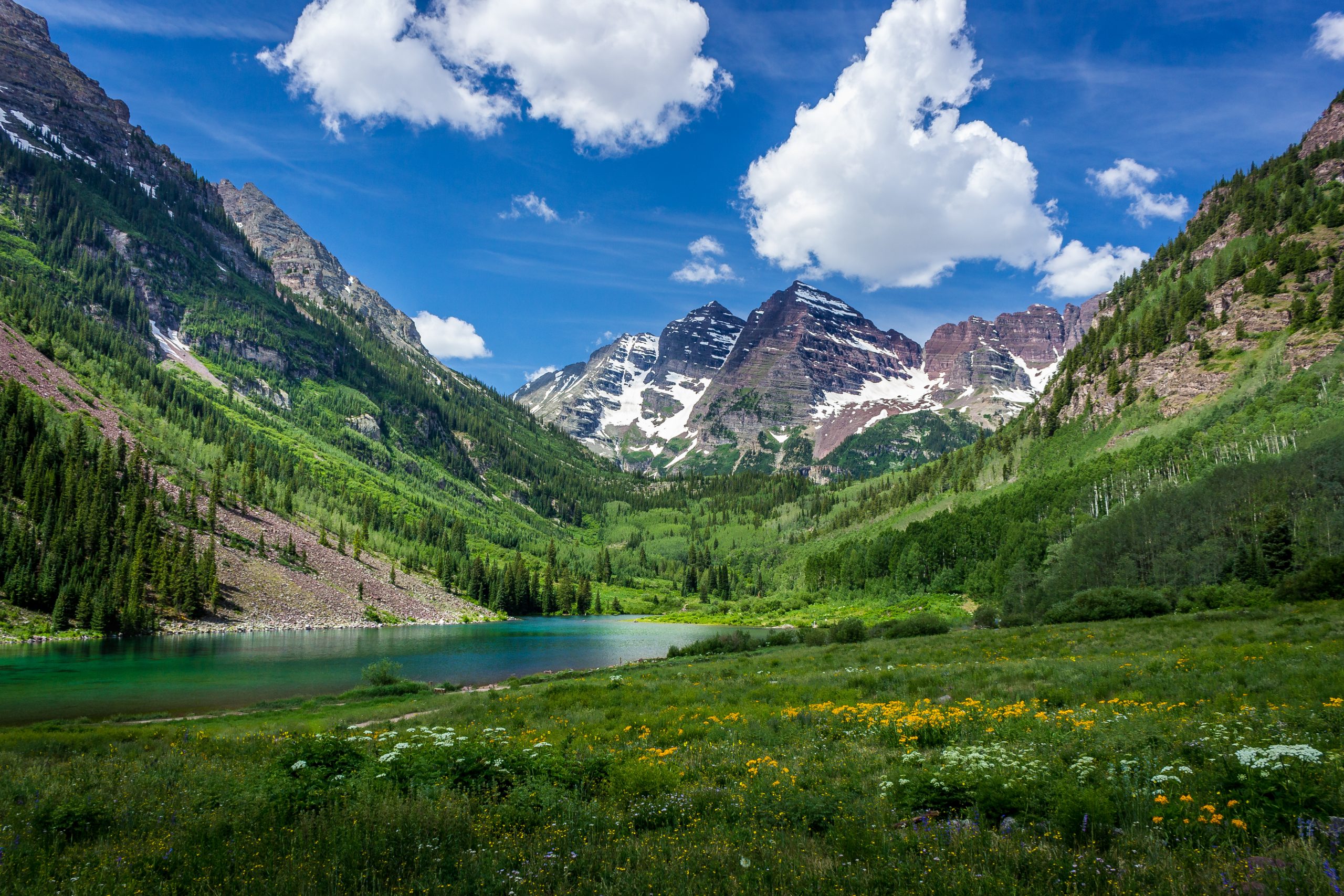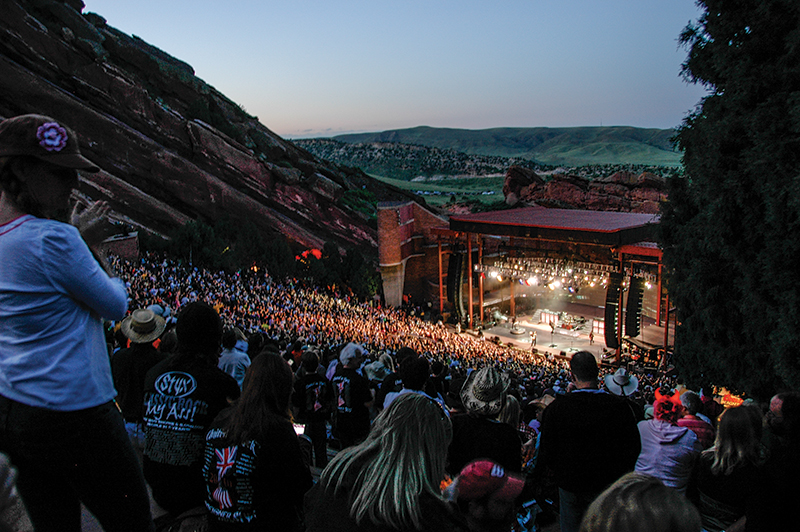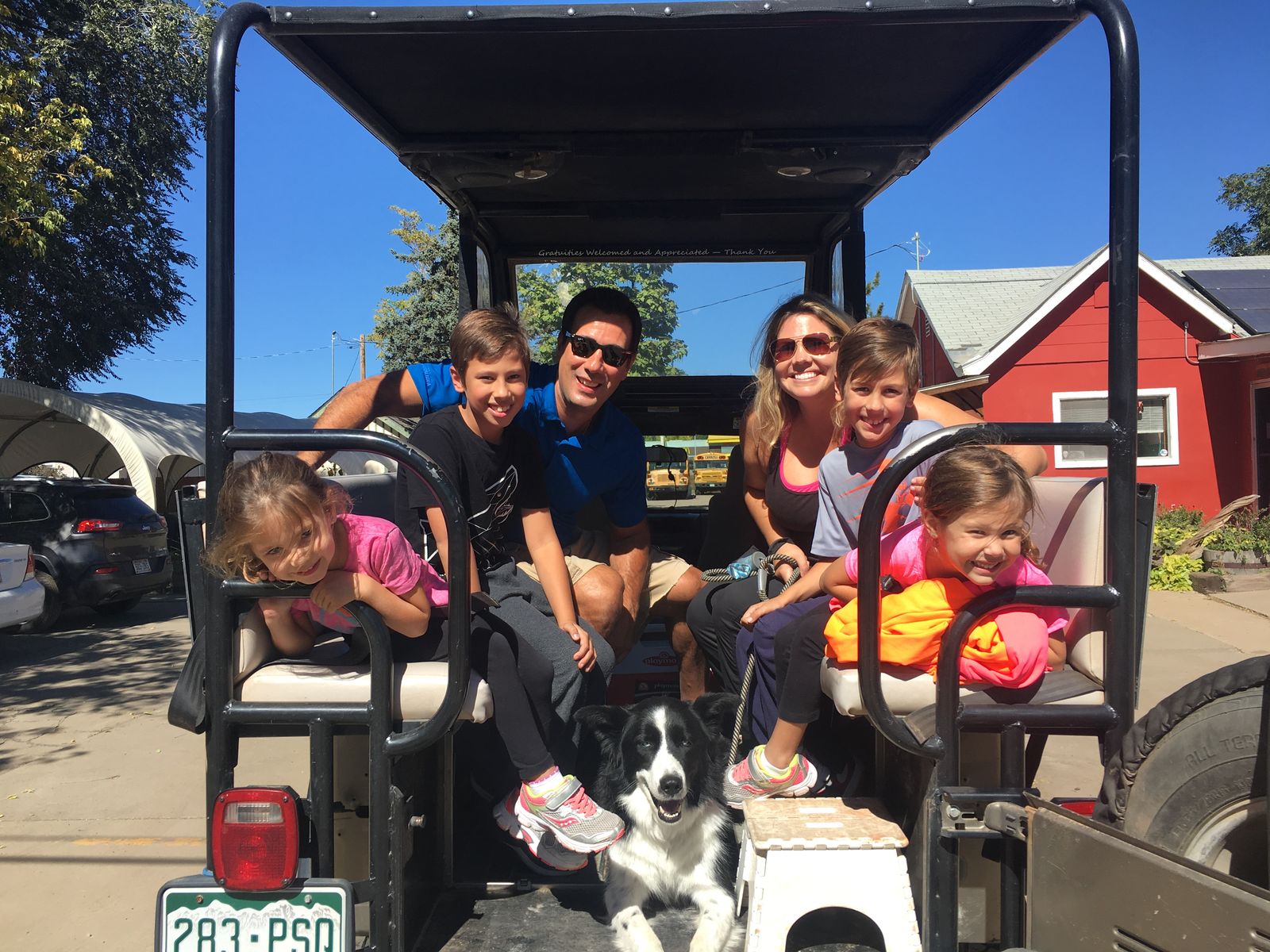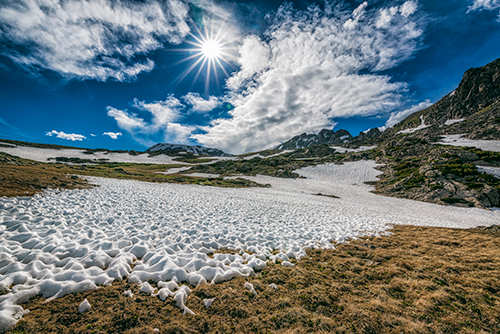Visiting the Maroon Bells: A Colorado Classic
When to Visit the Maroon Bells
Summers are the most popular time to visit the Marron Bells and undoubtedly the busiest season at Maroon Lake. Wildflowers in the Maroon Valley are colorful and abundant, with lush greenery, pleasant weather, and reflective skis are enjoyed throughout the day. Pictures of the lake and the mountains are just stunning. But the Maroon Bells are also breathtaking in the fall when the aspen trees change color and wash the entire panoramic view in a warm gold that reflects in the water and stands in contrast with the stony mountains and emerald evergreens. Winter and early spring bring majestic snow-capped peaks and an icy lake to the scene, and though the road is closed during the winter months, this means serene isolation in one of the most beautiful places in the world if you can get to it. If you plan on making the trip during the snowier months of the year, snowshoes or cross-country skis are a must, and several companies offer snowmobiling tours of the area.
The Maroon Bells
You’ve probably seen an image of the Maroon Bells, even if you don’t know it. The magnificent mountains, framed by a perfectly U-shaped slope and with a reflective lake in the foreground, have been featured in countless magazines, tourism materials, and social media posts. The Maroon Bells and Maroon Lake are often thought to be the most photographed mountain peaks in Colorado or North America. While that might seem like a lofty claim, look at those beautiful, picture-perfect peaks and the stunning reflective lake at their feet, and it’s not difficult to see why.
Much like Hanging Lake near Glenwood Springs, the Maroon Bells Scenic Area has taken quite a beating from the heavy crowds of people coming to hike and stroll and look at these gorgeous natural phenomena, so there are new systems in place to help keep this breathtaking slice of Colorado nature pristine and beautiful for a long time to come.
What Are the Maroon Bells?
Maroon Peak and North Maroon Peak are two towering fourteeners in White River National Forest, between Aspen and Snowmass. While both peaks are above 14,000 feet, they are too close together to both be considered distinct 14ers, so only Maroon Peak is “officially” given the designation. The Maroon Valley and its lakes and mountains were named for the geological presence of hematite in the peaks, a mineral that contains a lot of iron and turns red when oxidized.
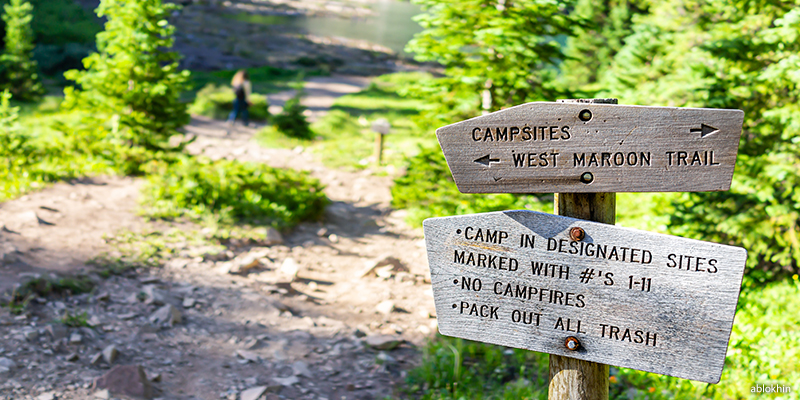
What to Do at the Maroon Bells
Hiking Trails
There are several hiking trails in the Maroon Bells Scenic Area. The most popular and easiest is the 1-mile Maroon Lake Scenic Trail, which rounds the lake and features an active beaver dam. The Maroon Creek Trail, at 3.2 miles, is a bit longer, and patient hikers, especially those who come early in the morning or later in the evening, might spot some wildlife like bighorn sheep or porcupines. Crater Lake Trail (3.6 miles) is more challenging, with rocky ascents, cooler temperatures, and beautiful views of the lake and White River National Forest.
If you’re a real hiking pro, you might be thinking about taking on the Bells themselves. The Maroon Bells are some of the most challenging mountains to climb in Colorado and have been known to be deadly. The class 3 hike to the top of Maroon Peak is 12 miles long, with extreme exposure and nearly 5,000 feet of elevation gain. It should not be attempted by anyone who is not an expert hiker. However, if you do feel up for the challenge, grab an overnight parking reservation and make your way to the summit for a truly unforgettable experience and panoramic view.
Four Pass Loop might be a great option for those looking for an intense backpacking experience without the death-defying climb of Maroon Peak. This 26.6-mile loop is usually done in 3-4 days and reaches a maximum elevation of 12,500 feet as it crosses through four magnificent mountain passes. Four Pass Loop is best attempted in mid or late summer.
Camping at Maroon Bells
The most popular and accessible Maroon bells Scenic Area campsites are at Silver Bar, Silver Bell, and Silver Queen. Sites can be reserved at recreation.gov, and campers will also need to purchase an overnight parking permit. Due to the delicate ecosystem in the area, campfires are prohibited at any campsites over 10,800 feet, such as those along the Four Pass Loop trail, and due to recent black bear activity, bear canisters are mandatory for anyone camping here.
There is no swimming, kayaking, fishing, boating, rafting, or wading permitted in Maroon Lake in order to preserve the incredible scenery. It’s one of the most photographed places in the country, remember? You don’t want a million strangers swimming in the foreground of your Instagram photo, do you?

How to Visit the Maroon Bells
Currently, there are systems in place for anyone who wants to explore this beautiful part of Colorado. Vehicle reservations can be made through the Aspen Chamber for $10 per vehicle and must be made in advance.
In the summer, during the hours of 8 am until 5 pm, all visitors must use the shuttle from Aspen Highlands Ski Area to gain access to the Maroon Bells Scenic Area. All shuttle reservations are $15.95. If you plan on visiting often, you can purchase a Maroon Bells Annual Pass, and America the Beautiful Passes (National Parks Pass) are also accepted. Parking permits can be purchased in time blocks by the time of the day, such as sunrise parking passes, midnight to midnight passes, day passes, or evening passes, so plan accordingly.
You can also visit the Maroon Bells Scenic Area by road bike, or if you’re up for a long hike, you can find your way to the Maroon Bells from Crested Butte on a 14-mile trek through some of the most gorgeous summer wildflower terrains in Colorado.
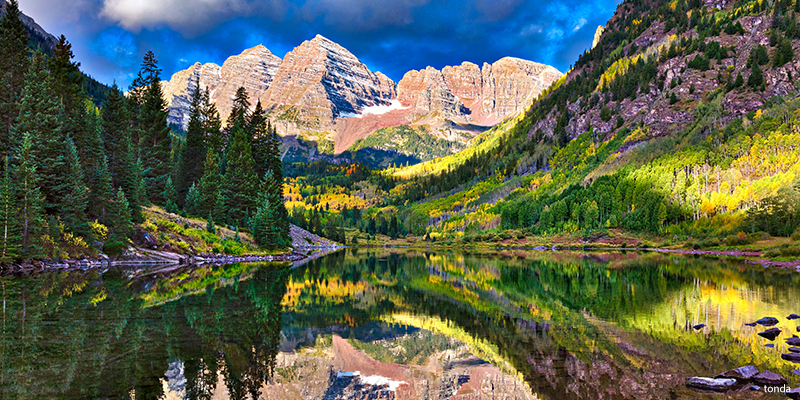
Visit the Maroon Bells and Avoid Crowds
Popular attractions like the Maroon Bells are often the most heavily trafficked. The reservation system means Aspen is able to limit the number of visitors at any given time (and they often close Maroon Creek Road if overcrowding becomes an issue), but if you’re looking for the most serene experience possible, or trying to stay as socially distant as you can, try to visit the Maroon Bells on a weekday, and at off-peak hours. Go as early as possible, or, if camping’s your game, head there in the evening so you can watch the sunrise the next morning. Be aware that during the summer, rain and thunderstorms are all but a guarantee during the afternoons, so check the weather forecast and plan your visit to the Maroon Bells ahead of time. Whenever you end up going, the only thing for certain is that you’ll find an incredible view waiting for you at the Maroon Bells.

